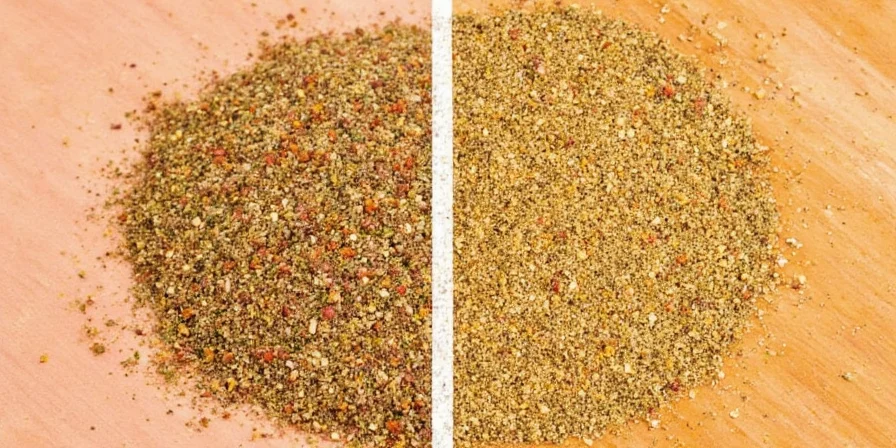Za'atar, Za'atar Everywhere: A Spicy Journey Through Global Flavors
If you’ve ever tasted za’atar on warm pita bread and thought, “Wait, this is a spice mix?!” — congratulations, you’ve just been initiated into the world of global spice magic. In this blog post, we’re diving headfirst into everything za’atar, exploring its origins, variations across cultures, cooking tips, and why it deserves to be more than just a kitchen shelf ornament.
Table of Contents
- What Is Za'atar Anyway?
- History & Origin: From Ancient Times to Modern Tables
- Global Variations: How Different Cultures Make It Their Own
- How to Use Za'atar Like a Pro (Without Burning Your Toast)
- Health Benefits: Is Za’atar the Real Superfood You've Been Missing?
- Homemade vs Store-Bought: Spice Wars Edition
- Frequently Asked Zesty Questions
What Is Za'atar Anyway?
Za’atar — pronounced zah-uh-tar or sometimes zee-tar, depending on how much coffee you’ve had — is a Middle Eastern spice blend with roots stretching back thousands of years. Traditionally, it's made from dried thyme, sumac, sesame seeds, salt, and occasionally oregano or marjoram. But here’s the twist: no two za’atars are exactly alike. Each region (and often each family) has its own special touch.

History & Origin: From Ancient Times to Modern Tables
Za’atar isn’t just a trendy topping for avocado toast — it’s ancient. The word itself comes from the Arabic name for wild thyme, and historical records show that Egyptians used za’atar-like blends for medicinal purposes and culinary delight. In medieval times, it was believed to improve memory and alertness. Not bad for a humble spice!
| Time Period | Use of Za’atar |
|---|---|
| Ancient Egypt | Mixed into poultices for healing |
| Roman Empire | Used as seasoning and traded as luxury goods |
| Ottoman Era | Included in communal meals and regional cuisines |
| Modern Day | Trendy garnish for flatbreads and dips |
Global Variations: How Different Cultures Make It Their Own
You might think za’atar is purely Middle Eastern — but like pizza or denim jeans, once people find something delicious, they make it their own. Let’s take a whirlwind tour around the world:
- Lebanon: Rich in sumac, bright and lemony flavor
- Jordan: Often includes caraway seeds for extra earthiness
- Israel: Commercial blends may add MSG for that umami kick
- Saudi Arabia: Sometimes uses dried mint instead of thyme
- Greece: Uses oregano-heavy mixes under names like ‘zaataros’
How to Use Za'atar Like a Pro (Without Burning Your Toast)
Za’atar is incredibly versatile — not unlike duct tape, but tastier. Here are some pro-level tricks to unlock its potential:
- The Classic Way: Mix with olive oil and spread over fresh flatbread before baking
- As a Seasoning: Sprinkle over roasted potatoes or grilled chicken
- With Yogurt: Stir into labneh or Greek yogurt for a dip that slaps
- In Desserts?! Yes! Try a pinch in chocolate chip cookies or shortbread
Health Benefits: Is Za’atar the Real Superfood You've Been Missing?
Beyond flavor, za’atar packs a nutritional punch. Thyme contains thymol, which has antimicrobial properties. Sumac is rich in antioxidants, while sesame seeds bring healthy fats and protein. Together, they create a spice powerhouse that can support digestion, immunity, and even brain function.
| Ingredient | Nutritional Benefit |
|---|---|
| Thyme | Antimicrobial, anti-inflammatory |
| Sumac | Rich in vitamin C and antioxidants |
| Sesame Seeds | Good source of calcium, iron, magnesium |
| Marjoram/Oregano | Packed with fiber and omega fatty acids |
Homemade vs Store-Bought: Spice Wars Edition
While store-bought za’atar is convenient, homemade blends let you customize flavors to your liking. Here’s how they stack up:
| Factor | Store-Bought | Homemade |
|---|---|---|
| Flavor Control | Limited | Total freedom! |
| Ingredients | Potentially lower quality | Fresher and customizable |
| Cost | $$$ | $$ (or less!) |
| Convenience | High | Moderate |
Frequently Asked Zesty Questions
Can I Substitute Za’atar?
If you're caught in a za’atar emergency (yes, that’s a thing), try combining dried oregano, sumac, and sesame seeds. Not perfect, but close enough for survival mode.
Does Za’atar Expire?
Technically no, but its potency fades over time. For best flavor, use within 6–12 months.
Is Za’atar Spicy?
Not in the chili sense. It has herbal notes with a citrusy tang from the sumac, making it bold but not fiery.
Conclusion
Za’atar is more than just a spice; it’s a passport to flavor, history, health, and creativity. Whether you’re brushing it onto flatbread, mixing it into dips, or experimenting with fusion recipes, there’s a za’atar path waiting for every taste. So go ahead, embrace the za’atar — sprinkle it liberally and savor the journey.










 浙公网安备
33010002000092号
浙公网安备
33010002000092号 浙B2-20120091-4
浙B2-20120091-4